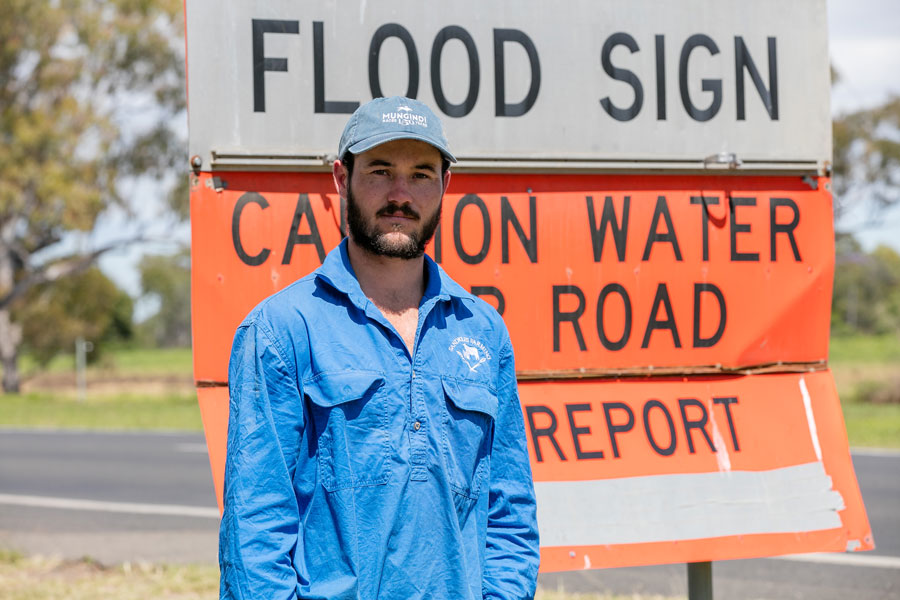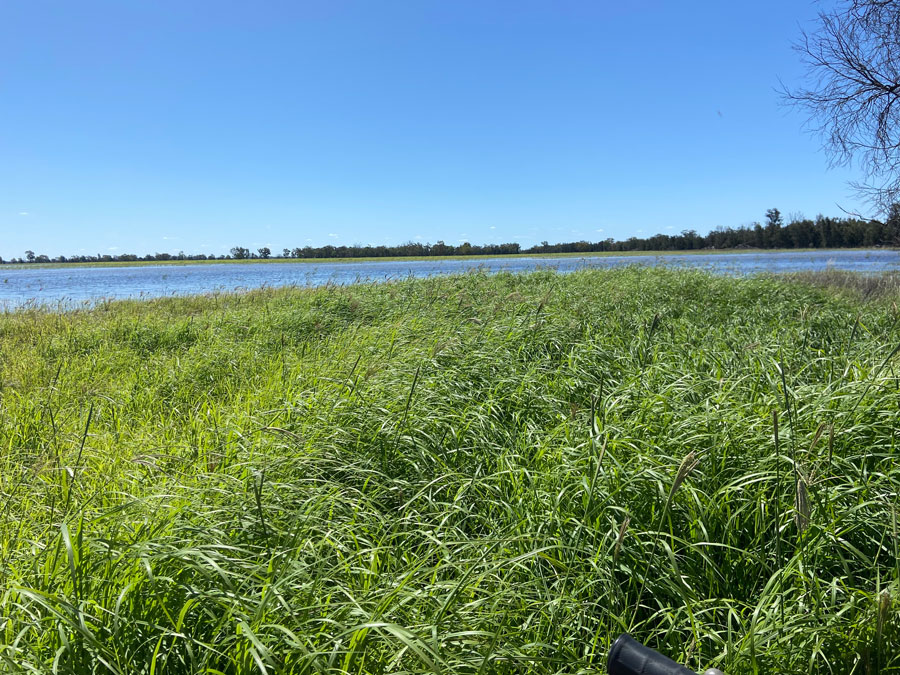Key points
- Keen to grow more with his existing land, Tim Houston will explore how to sustainably transition land via a Nuffield Scholarship
- How other countries are managing this process to achieve a positive triple bottom-line outcome, with social, environmental, and economic benefits, is high on his travel agenda.
Tim Houston broke the drought when he returned to the family farm in late 2019 after studying for a Bachelor of Business in farm management at Marcus Oldham College in Victoria.
Up until then, there had been a run of dry years at Mungindi, on the Queensland/New South Wales border. “In 2019, we received 90 millimetres for the whole year. It looked like Mars here,” Tim says.
That seems like a distant memory now. Since then, the rain has hardly stopped. Like many growers in the northern region, Tim spent spring moving cattle to higher ground, shifting grain and getting roads as ready as possible before the inevitable double-hit of floodwater and rain.
Tim and his parents Rob and Sally operate Sandholes Farming, an operation consisting of 14,000 hectares of grain and dryland cotton cropping and Brangus cattle breeding. In a bid to make better use of native pastures, Sandholes has recently added Australian White sheep breeding to the enterprise mix.

The drought broke when Tim Houston returned to the farm after studying. Since then the rain has hardly stopped and has led to road closures, loss of planting opportunities and flooded pastures. Photo: Mel Jenson
Making the best use of the land – socially, environmentally and economically – is a topic that the family is keen on and one that Tim will investigate as part of his recently awarded Nuffield Scholarship, supported by Cotton Australia and the Cotton Research & Development Corporation.
Farming between three different rivers means that recent land use decisions have been a bit different to other years. “For the past 18 months, we’ve faced flooding, on and off. It has meant that on our low country we had no crops in 2022 or 2021. However, in 2021, the country that wasn’t flooded did really well, so we made up a bit there. In terms of getting grain in and out, we were lucky that year. We had a break during harvest, and we weren’t too wet, which meant grain got back to our silos.”
Cropping and rotational decisions have also been tweaked. “Our ‘normal’ rotation is wheat/barley/chickpeas, a long fallow into a summer crop, such as sorghum or cotton, and a long fallow into wheat again. However, this year (2022) we reduced our chickpea area and planted some faba beans. This was due to the low pea price and the nitrogen benefits that come with growing faba beans.”
Decisions on planting summer crops, such as cotton or sorghum, normally depend on soil moisture. “Our deep black soils and ability to store moisture through a long fallow means a lot of people in the area are having a bit of success with dryland cotton, which tolerates the heat better than sorghum in our summers as well.” However, big floods over the 2021-22 summer and again in the 2022 spring have limited summer crop options.
Improved pastures
About 65 per cent of Sandholes’ farming operation is usually cropped, with mostly native pasture grazing making up the remaining 35 per cent.
Breeding cattle usually graze the native pastures. However, the new flock of Australian White sheep will also graze them. Tim Houston says: “As non-selective grazers, we hope that the sheep may be able to utilise some of our native pastures better than what we have been able to do with our cattle. We also hope they can put some grazing pressure on some of the weeds that, traditionally, our cattle have not.”
Recently, 100ha of improved pastures – a mix of Bambatsi, Premier Digitaria, Progardes and Rhodes Grass – have been planted in a poor-quality cropping paddock. The pastures, which had to be resown due to flooding and were under water again in the spring, are part of a broader cropping and improved pasture rotation trial.

Making the best use of the land – socially, environmentally and economically – and the potential of improved pastures is something Tim Houston will explore via a Nuffield Scholarship. This image shows the family’s improved pastures with floodwater in the background. Photo: Tim Houston
On some of Sandholes’ Queensland farmland, Tim is hoping to explore a soil improvement process that rotates between cropping and improved pasture phases. “Utilising cropping will help to destroy the weed bank before planting in an improved pasture.”
Through this process, Tim wants to explore what benefits it brings to soil carbon levels. He has watched with interest how other farming enterprises in the district have purchased cropping land, planted improved pastures and calculated soil carbon levels. “We plan to test our soil and get a baseline reading and then test it again in the future to see if there has been any increase.”
Tim is very keen to find out how other countries have managed the concept of sustainable land intensification - growing more with existing land. “ The Global Biodiversity Framework covers sustainable intensification, and I want to explore how farmers across the world are navigating this. I hope to bring this information back to Australia,” he says.
“I’m not sure how you keep everyone happy. This is what my research is aiming to find out. I want to find a way forward where we can deliver positive social, economic and environmental outcomes. I would like to investigate how other countries are sustainably intensifying their land, to see the new techniques and the ways they are doing it to give the best outcome possible."
As well as his interest in soil carbon, Tim believes food production needs to be increased. “More than a decade ago, the United Nations stated that world food production would have to double by 2050 to keep pace with global population growth. I believe Australian agriculture has both an opportunity and a responsibility to meet future demand. The question is how we do this, while balancing social, economic and environmental needs.”

























































